In a joint discovery announced by the Subaru and Hubble telescopes, researchers have captured images of a gas giant protoplanet whose distant formation supports the disk instability theory. Plus, galaxies, more galaxies, a couple of rocket launches, and updates on JWST and SLS.
Podcast
Show Notes
Star formation dominated earlier (but not earliest) universe
- NOVA press release
- “The galaxy starburst/main-sequence bimodality over five decades in stellar mass at z ~ 3-6.5,” Pierluigi Rinaldi et al., to be published in The Astrophysical Journal (preprint on arxiv.org)
Fourteen eating black holes share web of galaxies
- CXO press release
- NASA press release
- “The 700 ks Chandra Spiderweb Field I: evidence for widespread nuclear activity in the Protocluster,” P. Tozzi et al., to be published in Astronomy & Astrophysics (preprint on arxiv.org)
Looking at an active system up close
- NASA image release
Modeling Jupiter’s origin story
- NCCR PlanetS press release
- “Enrichment of Jupiter’s Atmosphere by Late Planetesimal Bombardment,” Sho Shibata and Ravit Helled, 2022 February 24, The Astrophysical Journal Letters
Protoplanet imaged during formation
- Hubblesite press release
- Subaru Telescope press release
- “Images of embedded Jovian planet formation at a wide separation around AB Aurigae,” Thayne Currie et al., 2022 April 4, Nature Astronomy
Update: JWST still aligning instruments
SpaceX launches latest polar orbit mission
- SpaceX press release
Rocket Lab launches more BlackSky satellites
- Without Mission A Beat mission page (Rocket Lab)
SLS tries to have a pre-launch test
- Artemis I Wet Dress Rehearsal Preparations Underway (NASA)
- Artemis I Wet Dress Rehearsal Called off for April 4 (NASA)
- NASA Prepares for Next Artemis I Wet Dress Rehearsal Attempt (NASA)
Transcript
Today was supposed to be the day we finally had an update on the SLS and its preparedness to travel to the Moon and beyond.
But, in what is now a recurring story for this “always late but always makes a big entrance” rocket, things did not go as planned.
Many things happened, and many times the rocket did not get fully loaded with propellant for a wet dress rehearsal.
But we were all set to talk all about SLS today.
We were. I wrote many words. And they are good words.
So today, we will still discuss SLS, and we are going to hope that by the time you watch this, SLS will have gotten its valves together and done a successful test-load… or not.
And in addition to SLS, we have stories on black holes, forming planets, and even an update on JWST continuing its path toward science.
All that and more, right here on the Daily Space.
I am your host Dr. Pamela Gay.
And I am your host Erik Madaus.
And we’re here to put science in your brain.
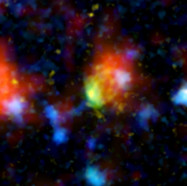
There are a lot of major research questions that researchers initially figured that JWST would answer after it launched in the early twenty-teens, but when that massive space telescope got delayed and delayed, researchers creatively came up with other ways to get the data they needed. Through a combination of computer models and creative telescope use, the astronomy community built up a picture of mass coming together, galaxies building up, and stars forming throughout the mix.
And that star-forming was just a healthy, run-of-the-mill, slow and steady, regular rate.
But that understanding came from more computer models than observatory data.
Using new data coming to us through the combined efforts of the Hubble Space Telescope (HST) and the utilization of galaxy clusters as gravitational lenses, researchers have found ways to start to image distant galaxies. And thanks to the time it takes light to reach us, we’re seeing galaxies as they appeared early in the universe.
Sixty to ninety percent of those galaxies, a new paper in The Astrophysical Journal points out, were experiencing extremely high levels of star formation, consistent with them being star-bursting galaxies. This work is led by Pierluigi Rinaldi.
In a not-starbursting galaxy, like our own Milky Way, we see pockets of star formation associated with giant molecular clouds collapsing into stars and forming star clusters. These galaxies may form one to a few stars a year, and these pockets of star formation are generally triggered by regular events like supernovae, collisions between clouds, and other minor shocks.
In starbursting systems, massive events, such as the collision between two systems, can cause the bulk of the gas and dust in a system to engage in star formation. These kinds of galaxy-wide events generally last 10-100 million years, and galaxies can undergo multiple bursts of star formation over time.
Current models of the evolution of the early universe don’t predict a lot of starburst behavior.
But the epic combination of Hubble, the Spitzer Space Telescope, and the ground-based Very Large Telescope was able to observe 20,000 distant galaxies. This group found that 20-40% of star-forming galaxies are undergoing starbursts and were forming 60-90% of new stars. This is compared to today’s rate of about 10% of stars coming from starburst galaxies. According to Rinaldi: Even the latest and most sophisticated models of galaxy formation had not predicted this. It seems likely that the physical processes occur at too small a scale for the models to account for them.
Future research that will continue exploring what our computer models must be missing is already funded through an NWO Vici grant, and when we find out how 20-40% of early galaxies got shocked into forming stars, we’ll let you know, right here, at the Daily Space.
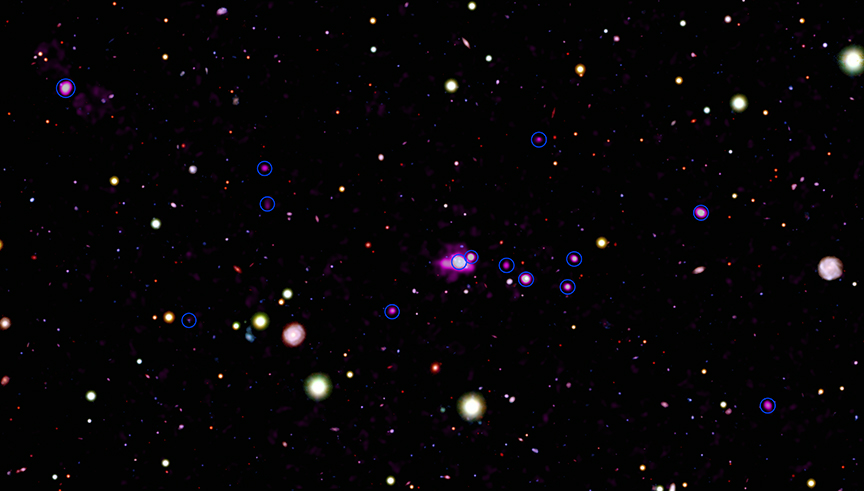
Along with discovering starbursting galaxies with Hubble and Spitzer, researchers are finding actively feeding black holes with the Chandra X-ray Observatory. The galaxy J1140-2629, or the Spiderweb galaxy, sits at the center of a forming galaxy cluster. Chandra peered at this region for eight days and discovered fourteen actively feeding galaxies in this region, which is just 11.3 million light-years across. These systems are coming together at the same point in the universe’s history as when those starburst galaxies were also being found. Just like starbursts can be caused through collisions, dust and gas can be sent cascading into the centers of galaxies where they can feed black holes.
We don’t know if collisions are triggering any of these systems for sure, but it is intriguing to think about. To get to the bottom of why so many galaxies are so active, the team will be pouring through HST data to see what can be seen. They will also be using Chandra to observe additional galaxy clusters in the process of forming.
These newly discovered active black holes are described in a new paper in Astronomy & Astrophysics led by Paolo Tozzi.

While the starbursting and active galaxies we’ve discussed so far are too far away to be seen in any amount of detail, they do have siblings in our modern universe that give us a taste of what these larger populations may have looked like.
At the start of April, the good folks at NASA and ESA provided us with a new and stunning Hubble image of the active galaxy NGC 7172. This system has an incredibly bright core dominated by a disk of material that is spiraling toward the black hole’s event horizon. This disk is so dense it is able to generate its own light and even undergo some nuclear reactions. Dust that is a safe distance from that hungry supermassive black hole is backlit in this image, and star formation can be seen glowing blue along the galaxy’s edges.
Imagine living at a time when this kind of stunning system was the norm and not the exception. That brighter time is what, we hope, maybe, JWST will show us in detail.
And after taking a foray into our local solar system, and looking at some rockets, we’re going to get a quick update on JWST’s journey toward doing science.
There’s this curious relationship between theory and observation where one keeps leading to the other. First, you see an object in the sky. Then you make a hypothesis about what it is. Then you observe some more, and you change the hypothesis with the new information. As you get more and more data, you can refine the hypothesis. Yay for the scientific method.
As computing has gotten more advanced, we’ve gone from paper calculations to massive simulations that we can use to model our hypotheses and see if they really do play out. After all, we cannot rewind the formation of our own solar system to watch it happen, and going to various worlds is costly and difficult. So we make do with what we’ve already collected and keep building on our observations with these computer-generated models. Sometimes, we get lucky and get a newer mission to provide more data, though, and such is the case with Jupiter and NASA’s Juno spacecraft.
Using all that new data, along with data from the Galileo mission, a team has published their model of Jupiter in The Astrophysical Journal Letters. Because Jupiter, of course, defies some of the planetary formation expectations we have. I mean, really, what world doesn’t these days?
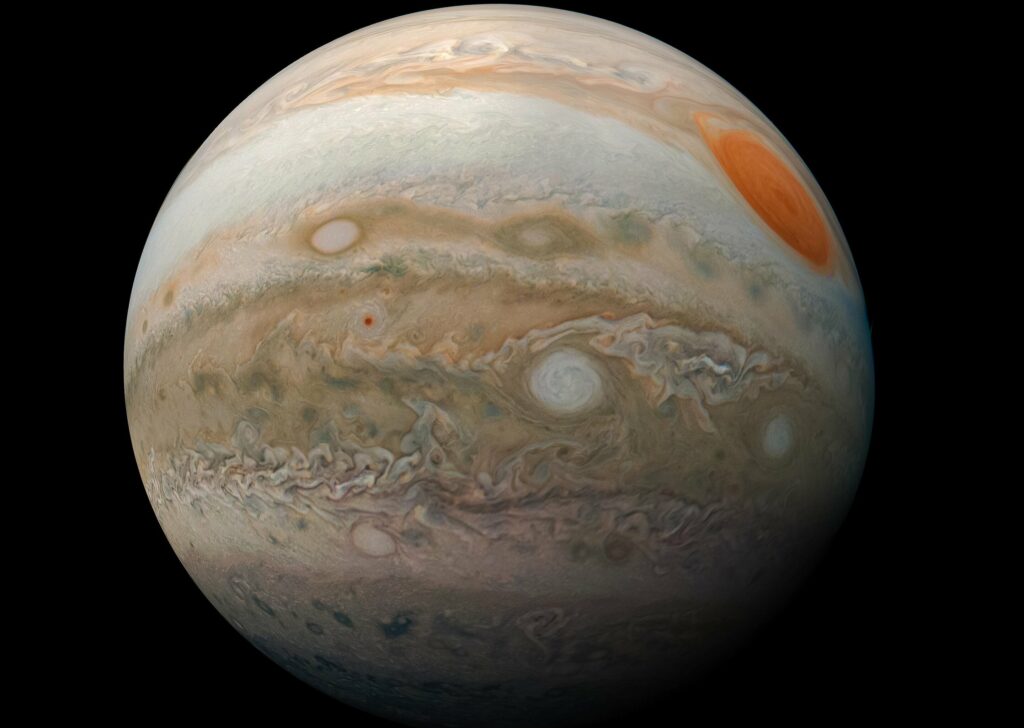
Jupiter, it turns out, has an atmosphere unexpectedly rich in heavy elements, and by heavy, we mean, not hydrogen or helium. Galileo dropped a probe into the atmosphere for that information. Then along comes Juno, and the new data suggests that Jupiter’s interior isn’t uniform at all and has a complex structure, which means that the interior isn’t fully mixed. And as co-author Ravit Helled explains: Since we now know that the interior of Jupiter is not fully mixed, we would expect heavy elements to be in a giant gas planet’s deep interior as heavy elements are mostly accreted during the early stages of the planetary formation. Only in later stages, when the growing planet is sufficiently massive, can it effectively attract large amounts of light element gases like hydrogen and helium.
So how did Jupiter collect all those heavier elements? Lead author Sho Shibata answers: Our idea was that Jupiter had collected these heavy elements in the late stages of its formation by migrating. In doing so, it would have moved through regions filled with so-called planetesimals—small planetary building blocks that are composed of heavy element materials—and accumulated them in its atmosphere.
Enter a bajillion simulations to see if there were any pathways of migration that gathered up enough material for Jupiter to have a bunch of heavier elements mixed into the atmosphere. And the results show that if Jupiter formed about four times farther out from the Sun than its current location, and then migrated inward, it could have collected up enough bits of planetesimals to match its actual makeup.
Finally. And now, to apply that updated formation theory to exoplanets.
And when I said now, I meant now.
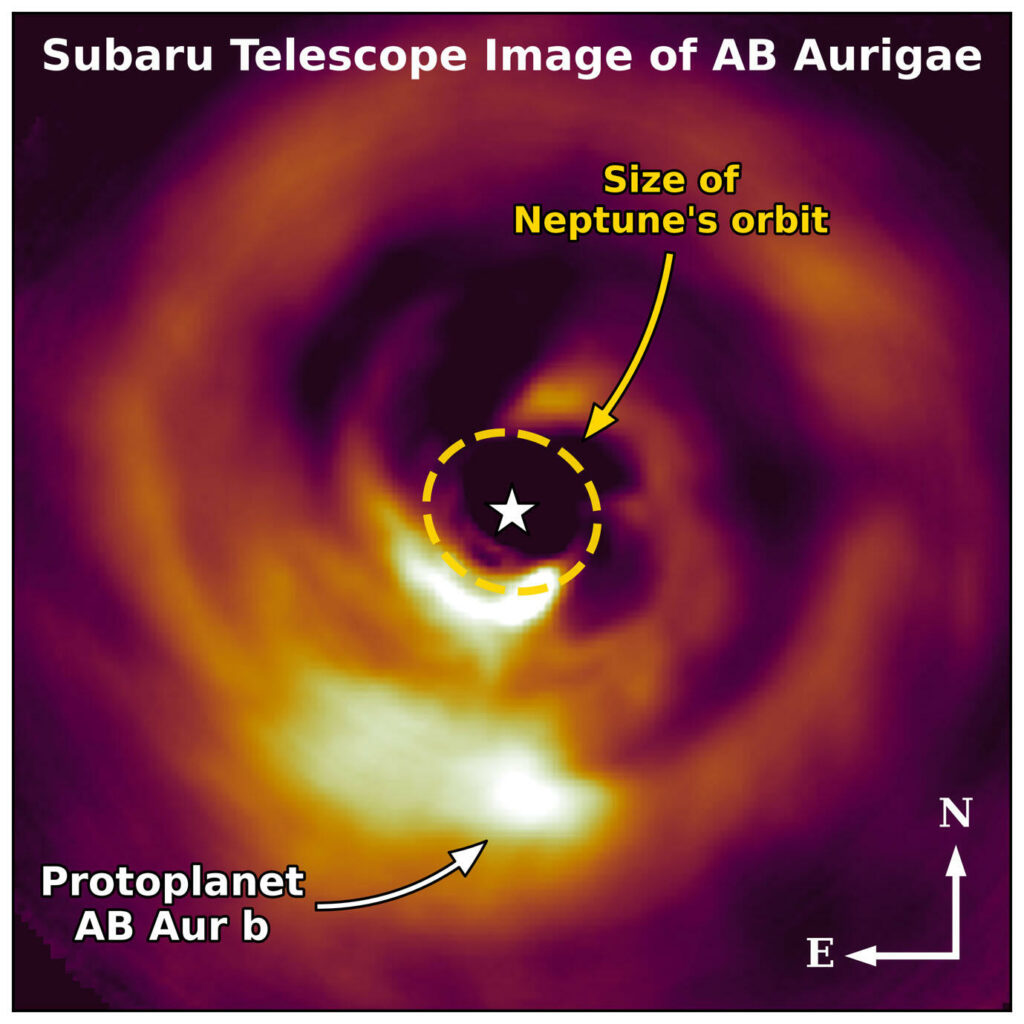
In joint observations between the Subaru Telescope and the Hubble Space Telescope, a protoplanet called AB Aurigae b has been directly imaged during its formation. AB Aurigae is only a two-million-year-old star, and this baby planet is actually nine times the mass of Jupiter and orbiting 13.9 billion kilometers away. That’s three times the distance between the Sun and Neptune. And finding this protoplanet where it is definitely breaks a bit more of our theories on planetary formation. Or as lead author Thayne Currie said: AB Aur b sheds new light on our understanding of the different ways that planets form.
You see, while we know that planets migrate, we didn’t think that planetary cores could form this far away from the star. This would mean that a gas giant’s core would form closer in and then migrate out to collect the gases. In our previous story, models show that Jupiter migrated inward at some point to collect all the heavier elements in its atmosphere, and now this baby world shows us that gas giants can form out the great distance Jupiter would have needed before migrating inward.
And that means instead of the “standard” core accretion method we’ve talked about before, where rocky worlds spin and spin and crash and collect up material and then migrate outward for their gases, we now have to seriously consider the disk instability hypothesis. That’s where the massive protoplanetary disk, full of gases, cools down over time and then breaks into one or more collapsing clumps of planetary mass. Sort of similar to how stars form, but only if you don’t look too closely at the process.
Honestly, this discovery is huge, and not just in the size of the exoplanet kind of way. Planetary scientists have been debating the core accretion versus disk instability methods for decades now. And it took the combined power of Subaru’s extreme adaptive optics system, infrared spectrograph, visible light camera, and 13 years of observations plus the ability of Hubble to separate the planet from its star and provide a baseline for the system.
The results of this discovery were published in Nature Astronomy. And we’ll have the amazing image in our show notes at DailySpace.org.

Now that we’ve gotten all this amazing science out of the way, it’s time for an update on JWST and then… rockets.
Before we get to the rocket news, some good news about JWST.
After aligning the eighteen segments of the primary mirror to the secondary mirror and one instrument, the next step was to align more instruments. That step has now been completed, according to a NASA press release on April 1. The telescope is now aligned to the Near-Infrared Camera, Near-Infrared Slitless Spectrograph, Near-Infrared Spectrometer, and Fine Guidance Sensor. All that remains is the Mid-Infrared Instrument, which will be aligned once it has cooled down to operating temperatures.
Teams planned to do one more fine adjustment of the secondary mirror but decided it was unnecessary because the coarse adjustment was so good. According to Chanda Walker, wavefront sensing and control scientist at Ball Aerospace: This accomplishment was due to many years of planning and great teamwork among the wavefront sensing team.
In what started as a novelty trajectory but has gotten normal to the point that your host forgot about the mission until picking stories for this episode yesterday, on April 1 at 16:24 UTC, SpaceX launched another Falcon 9 rocket south into a polar orbit from Florida.
Booster 1061 launched from SLC-40 on its seventh flight. Onboard were forty spacecraft on the Transporter 4 mission. These included the usual complement of small- to medium-sized spacecraft, including several university CubeSats, but unlike previous Transporter missions, no Starlink spacecraft for SpaceX’s own internet constellation.
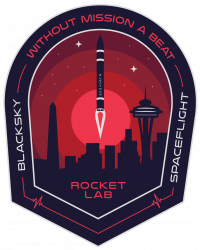
One of the many spacecraft on the flight was EnMAP, a satellite made by the DLR, or German space agency. The Environmental Mapping and Analysis Program (EnMAP) satellite has a hyperspectral imaging spectrometer capable of imaging from 420 to 2450 nanometers across two ranges. It can record 5,000 kilometers of the surface per day in 30-kilometer-wide strips. According to its mission description, EnMAP will be used for climate change impacts, land changes, water availability and quality, hazard assessment, and natural resources management.
A few hours later on April 2, Rocket Lab conducted its second mission of 2022, sending their latest dedicated pair of BlackSky global satellites into orbit from its Mahia Peninsula launch site in New Zealand at 00:41 UTC. This was the last of four such missions.
Rocket Lab has sent most of BlackSky’s fourteen satellites into orbit since 2019 and a total of 112 spacecraft for different customers across all 25 missions since 2017. No booster recovery was planned or attempted.
This past weekend, April 3, NASA’s Exploration Ground Systems (EGS) office was supposed to conduct the Wet Dress Rehearsal for the Artemis 1 Space Launch System rocket. This would have been a complete countdown test doing all of the same procedures as a real launch, going right up to the moment of engine ignition ten seconds before launch. We were all excited to share this milestone with you, but instead, you get a lesson in how developing and testing a new rocket isn’t easy.
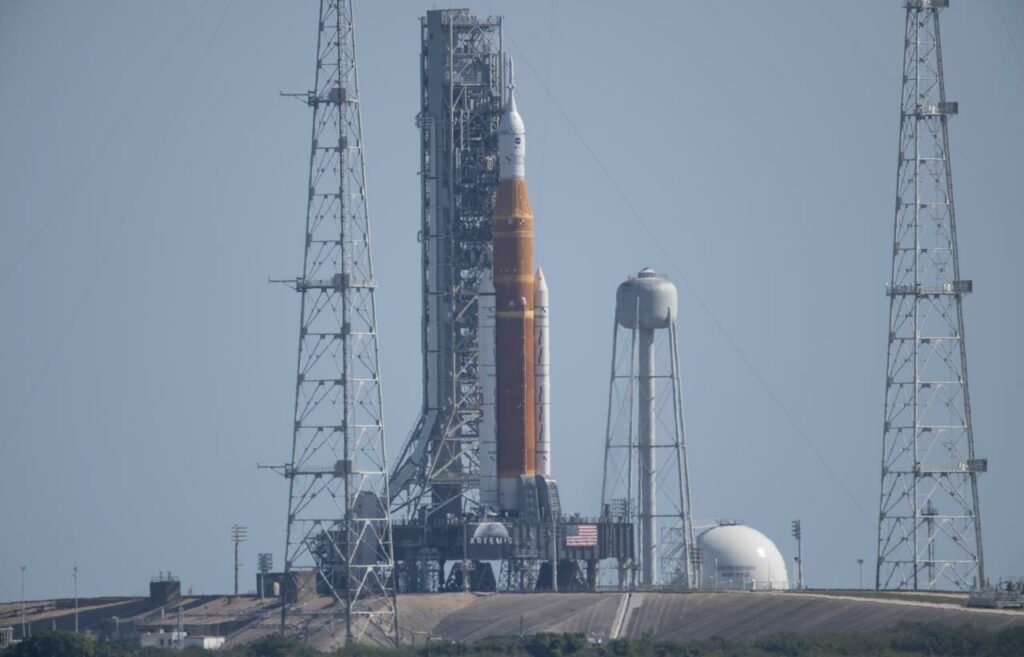
After rollout two weeks ago on March 18, engineers got the rocket hooked up to the pad systems and began to turn it on. The Wet Dress Rehearsal was scheduled to end on April 3, with the countdown actually starting 45 hours before that. Everything went smoothly, even as a lightning strike near the pad hit one of the lightning towers as intended, and not the rocket or its Mobile Launcher.
That is, until about T-9 hours when it came time to start filling the different stages with their very cold liquid oxygen and liquid hydrogen propellants. However, this first attempt to load propellants was scrubbed because fans that keep toxic gases out of the mobile launcher were not functioning, so technicians could not do their jobs safely. The launch team reset for the next day, yesterday, April 4.
This time, both the weather and the mobile launcher cooperated, and EGS started loading propellant into the SLS rocket — first, liquid oxygen into the core stage. Loading stopped for several hours because of a temperature limit, but after analysis, teams resumed. Then another issue came up, this time with the gaseous hydrogen vent valve on the core stage, specifically the ground system that controls it. This valve directs boiled off hydrogen out of the core stage so that it does not rupture. The team didn’t have time to solve this issue before their shift ended, so the launch director called another scrub.
What does this tell us? That rockets aren’t easy. They are massive, immensely complicated machines that even if they’ve worked once or a few times, that’s not a guarantee they will continue to work, especially if there are new systems involved that worked separately. EGS will try again in a few days and will eventually get the Wet Dress Rehearsal done, and we’ll be here to tell you all about it.
This has been the Daily Space.
You can find more information on all our stories, including images, at DailySpace.org. As always, we’re here thanks to the donations of people like you. If you like our content, please consider joining our Patreon at Patreon.com/CosmoQuestX.
Credits
Written by Pamela Gay, Beth Johnson, Erik Madaus, and Gordon Dewis
Hosted by Pamela Gay, Beth Johnson, and Erik Madaus
Audio and Video Editing by Ally Pelphrey
Content Editing by Beth Johnson
Intro and Outro music by Kevin MacLeod, https://incompetech.com/music/


 We record most shows live, on Twitch. Follow us today to get alerts when we go live.
We record most shows live, on Twitch. Follow us today to get alerts when we go live.